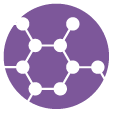Bioscience Competency Model
In collaboration with the Bioscience Community of Practice, the Employment and Training Administration (ETA) has worked with education, business, and industry leaders to develop a comprehensive competency model for bioscience. The model is designed to evolve along with changing skill requirements. The community of practice members have committed to working with industry partners to keep the model current.
The study "Technology, Talent and Capital: State Bioscience Initiatives 2008" defines the biosciences as a diverse group of industries and activities with a common link—they apply knowledge of the way in which plants, animals, and humans function. The sector spans different markets and includes manufacturing, services, and research activities. By definition, the biosciences are a unique industry cluster and are constantly changing to incorporate the latest research and scientific discoveries.

The Bioscience Community of Practice (COP) is composed of a group of individuals who share a common interest in the bioscience industry and who interact voluntarily and regularly to exchange information related to workforce and economic development efforts. This group was formed in July 2007 by stakeholders from the bioscience industry, academia, and the workforce development communities.
In 2025, the foundational tiers of the model were updated to align with changes in the Building Blocks Model. For more information, download the Summary of Changes.